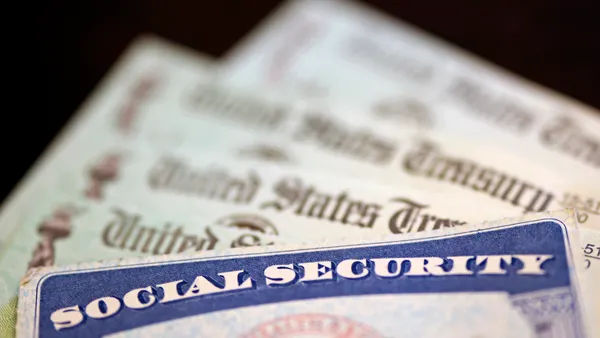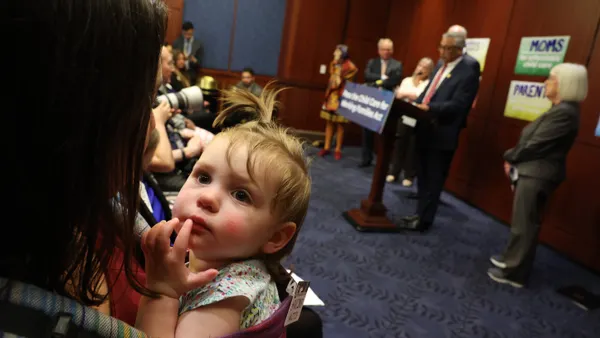Dive Brief:
- Median pay for female employees at Mastercard is roughly 92% of median pay for male counterparts globally, Ann Cairns, the company's executive vice chair, announced in a March 2 statement.
- Cairns said Mastercard has achieved gender pay equity among male and female employees at the same level who perform the same roles, citing the results of the company’s own analysis, but Cairns also noted that the company's aim is "parity across all measures."
- "It's essential for our business that we foster a workplace where all employees feel valued, respected and empowered to reach their greatest potential," Cairns said. "That includes equal pay for equal work."
Dive Insight:
Closing the gender pay gap has become a point of both publicity and internal priority for companies in recent years. A 2019 report from WorldatWork and Korn Ferry found 60% of employers surveyed were actively working toward achieving pay equity. At the same time, 23% of employers who identified pays gaps within their workforces considered implementation strategies but had not yet implemented them.
A number of companies in several industries have made "100% pay equity" announcements. Nordstrom did so in 2019, claiming it reached pay equity among employees of all races and genders with similar roles, levels of experience and performance. Nordstrom also said it achieved 100% pay parity, across its entire workforce, among men and women at the company. Match Group announced "100% pay equity" in 2018.
Measurements of the gender pay gap vary. In 2019, an analysis by software company Payscale placed the gender pay gap among U.S. employees at women earning $0.79 for every dollar earned by men that year. Globally, a 2018 report by the World Economic Forum calculated an average pay gap of 32%, and that it would take an estimated 108 years for the gap to be closed. Once adjusted for education and role, however, recent Georgetown University research puts the gap at 92%.
Employers can do their own work to reach pay equity, though methods vary. Sources previously told HR Dive that HR teams might look to internal processes as a way forward. Potential strategies include revisiting official guidelines for handling salary negotiations, training supervisors on federal, state and local obligations around equal pay, and nixing discussions of pay history during the hiring process. Internal audits also may give employers a better picture of pay gaps in their workforces.
At the federal level, agencies are taking some action to address pay equity, though the approaches taken have had a mixed reception from critics. Last month, a federal judge ordered that the U.S. Equal Employment Opportunity Commission's collection of employer pay data under the EEO-1 Component 2 was complete for this year, and the future of that data collection is uncertain after the agency declined to renew the collection process after the last cycle.













